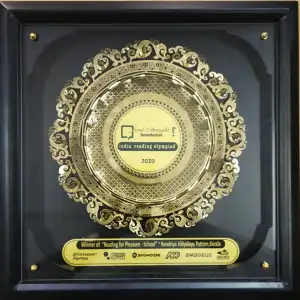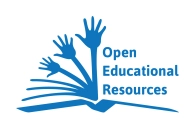
This article appeared on CNN.Money.com
Read about American politics and the career. Think about that in Indian conditions
Behind every great candidate are consultants, often highly paid ones.
January 7, 2005: 5:47 PM EST
By Jeanne Sahadi, CNN/Money senior writer
NEW YORK (CNN/Money) – For those who love politics, there’s nothing like a presidential campaign to get your fill.
But for those who really love politics, there’s nothing like making a career of every campaign season.
In this installment of our ongoing series on interesting six-figure jobs, we take a look at a few political consulting jobs – specifically, pollster, media strategist and opposition researcher.
A survey released last year by the Center for Congressional and Presidential Studies (CCPS) at American University found that roughly 50 percent of those working in political consulting made at least $100,000. Indeed, the potential for stars is to make far more.
This year, nearly half a million people will run for office, but only about 10 percent of the campaigns have professionals working for them, said James Thurber, director of the CCPS. Those campaigns range from the presidential race to large statewide gubernatorial, Congressional and Senate campaigns, as well as mayoral races in some big cities.
Dennis Johnson, associate dean of the Graduate School of Political Management at George Washington University, estimates there are about 7,000 political consultants working today.
To work at many political consulting firms you need two things: a demonstrated love of politics – volunteering and working your way up to paid positions in various campaigns or working on Capitol Hill – and great partisan loyalty.
Not that some consultants won’t switch parties for a job. But if you’re going to work for a Republican consulting firm, it’s best to come bearing your elephant soul. Likewise, if you’re knocking on the door of a Democrat, you’d best have voted for Bill Clinton and meant it.
A love of issue advocacy and crisis management doesn’t hurt either. In between elections, many consulting firms butter their bread with work from corporations, political action committees, unions and even candidates and causes in other countries.
Pollster
Ed Goeas, president and CEO of Republican polling and strategy firm The Tarrance Group, isn’t getting much sleep these days. When he does catch a few winks, it’s between 5 p.m. and 9 p.m. That’s when his team is in the field running polls for the Bush campaign in six states as well as campaigns in other states. He then stays up all night analyzing the data and spends the next morning briefing campaign teams on the results.
The schedule of pollsters and their staffs in the last few months before an election is brutal – often 18 to 20 hours a day, Goeas said. It’s more civilized in the off-season – meaning non-election years.
Goeas’ job involves analyzing polling numbers, helping the campaign develop a strategy based on those numbers and monitoring that strategy.
Of all political consultants, pollsters are most likely to have advanced degrees, since statistics are a heavy component of the job. But Goeas, who worked his first campaign at 12, recalls that when he started working at The Tarrance Group, the firm’s founder told his staff that Goeas got his doctorate on the streets.
The commitment to “the cause,” as Goeas calls it, can be very hard on family life, he said. The reward, however, is in working for and getting people elected who you believe in.
The path to six figures in polling can take eight to 10 years, Goeas estimates, depending on the size of the accounts you manage.
Media strategist
A media strategist oversees how the campaign is presented to the public. That includes everything from helping a candidate hone his or her message and prepare for debate; creating and producing campaign ads; buying and coordinating ad spots across different media; and speech writing.
In deciding whether to work with you, a candidate will look at your win-loss record, how long you’ve worked in the area where he or she is running, and your creative work. Beyond that, “it comes down to the basic: Do they click with you?” said Jim Duffy, a partner in Strother Duffy Strother, a leading media strategy firm for Democrats.
One route to becoming a media strategist is working your way up the ranks of a campaign to the post of communications director or press secretary. The earnings at that level can range from $4,000 a month to $20,000 a month if you’re working on a major statewide race, Duffy said.
That puts you in touch with the media strategists employed by the campaign, and those connections can lead to full-time work in media strategy. A firm like Duffy’s might hire you as an associate for between $50,000 and $100,000 a year. The salary you earn is dependent on your experience and the campaign business you bring with you to manage.
Graduate degrees don’t hurt. “But it’s more about you and your experience, aptitude and who you know,” Duffy said.
During election years, your time between Labor Day and early November isn’t yours. There’s no rest and no weekends, he said.
Besides the long hours, taking the heat is one of the stresses of the job, Duffy said. “If (your media strategy) doesn’t work, they look at you.” They also look at you if something beyond your control goes wrong. Maybe an opponent digs up dirt on your candidate and for one reason or another not of your choosing, your side doesn’t respond quickly. “It’s a classic case of all of a sudden it ain’t a pretty picture any longer,” Duffy said.
Media strategists, Duffy said, can make up to $500,000 a year. Some, Thurber said, can make even more.
Even those who work for B-level or C-level firms, Duffy added, “won’t end up at the poorhouse.”
Opposition researcher
If you like digging up dirt, opposition research may be a field for you.
Opposition researchers find information on the opposing candidate and write it up for the campaign staff in a report – which can run as long as 900 pages, said Jason Stanford, president of the Democratic opposition research firm StanfordEverhart.
More than just detailing the past voting records of the competition, researchers are looking for ways to illustrate and document how the opponent differs from their candidate, and to demonstrate how an opponent’s public record doesn’t necessarily match his or her political rhetoric. For instance, Stanford said, maybe an opponent voted to raise taxes but didn’t actually pay his own property tax.
The key is using public documents to support the case. For most people, finding them can be difficult or slow. The value of an opposition researcher is efficiency and discretion once he finds gold. “I just know how to get it faster and more discreetly. I’m not going to go to a bar and brag,” he said.
Beyond that, Stanford uses the information he finds to help construct political arguments for the campaign. He also helps campaigns strategize how to publicly address any dirt dug up on his candidates.
In the heat of election season, Stanford and his staff might put in 10 to 12 hours a day, six days a week.
Extensive travel is another component of the job. Since he has a good staff, Stanford only travels about one week a month, but it used to be much more. Beyond that, he said, “the isolation is one of the freakiest parts of the job.” Sometimes, he’ll spend whole days in a library, and the first person he’ll speak to is the waiter at dinner.
In terms of earning potential, when you’re just starting out you may make well under $30,000. His first campaign paid him $1,800 a month. But after a number of campaigns, you can make in the low six figures. Indeed, he said, for some, “I don’t think a quarter of a million is out of reach.” 
Filed under: Career Corner








































































